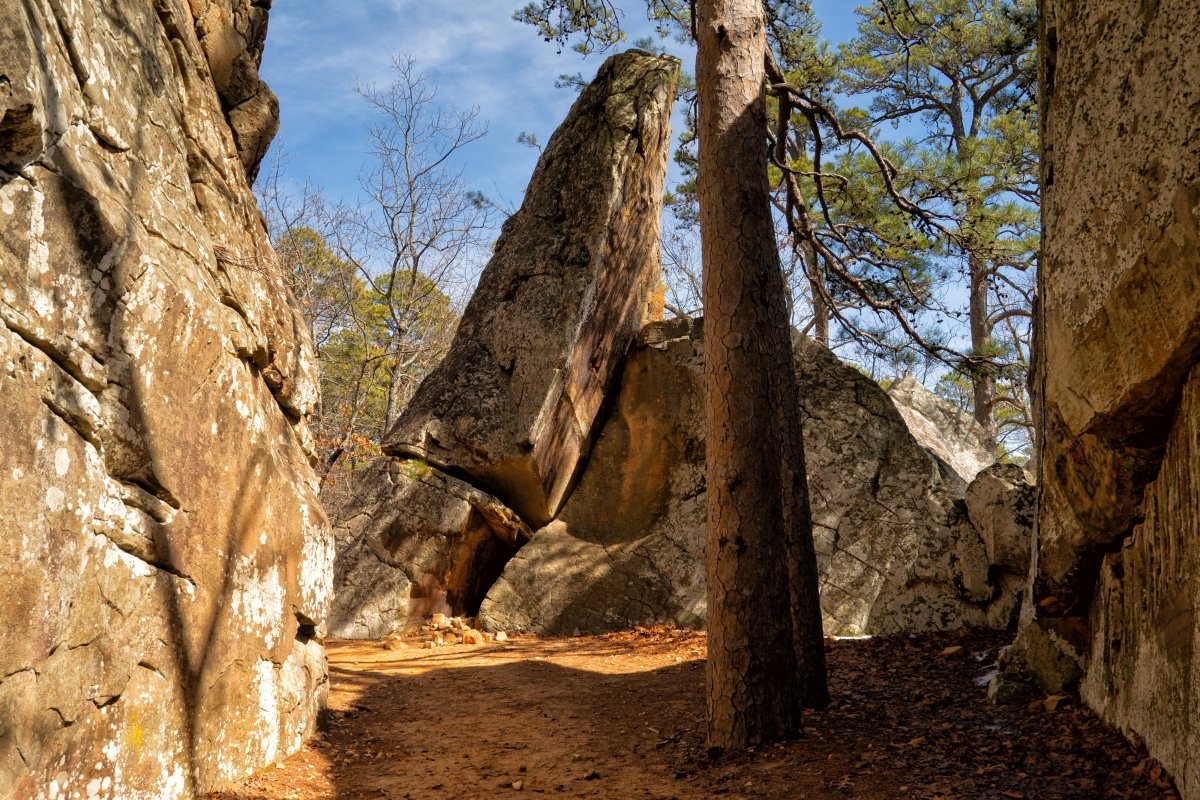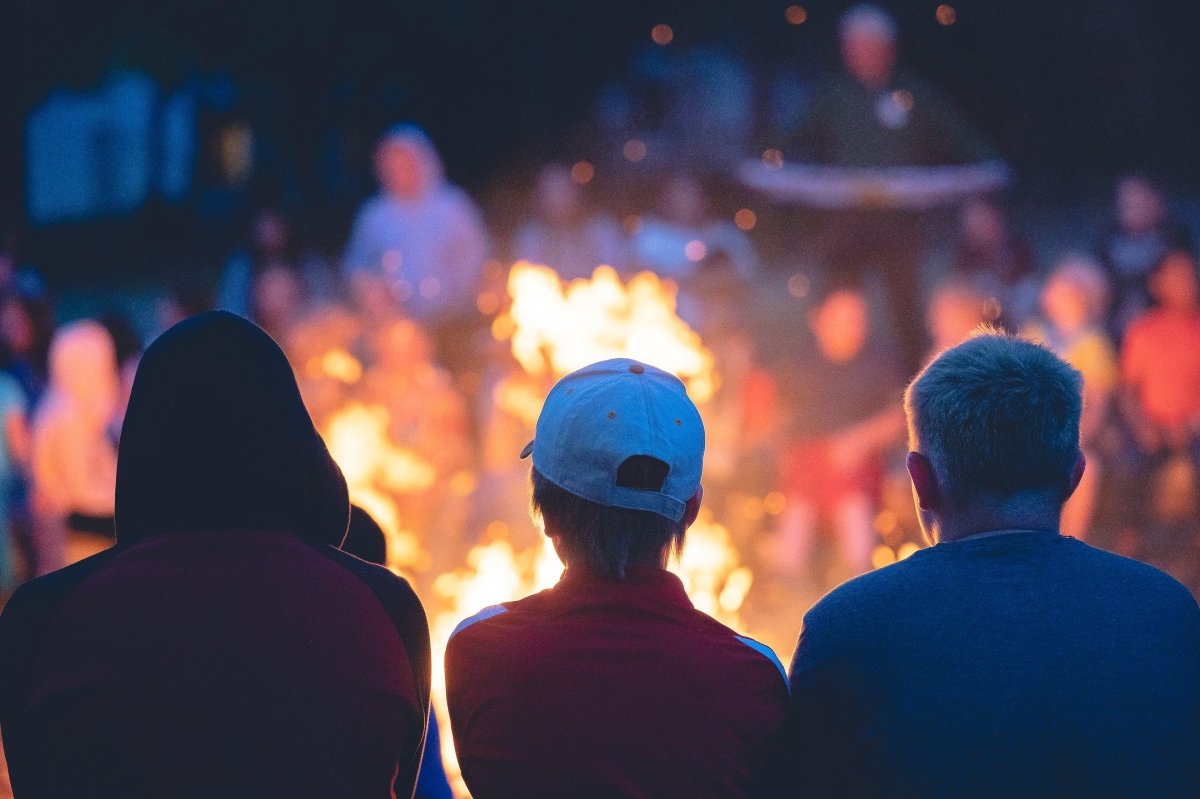For many, camping is an activity nest done within the enclosure of a designated campground. For others, the nomadic option of dispersed camping offers more thrill.
Are you interested in going dispersed camping? Here is all you need to know about this leisurely activity before trying it.
What Is Dispersed Camping?
Have you ever tried to set up your tent outside of a designated camping area? Maybe you find yourself exploring somewhere out in the wilderness and think maybe, just maybe, you do not have to go looking for a designated campsite or holiday lodge. So, you do the next best thing of looking for the closest camping area, maybe just a secluded spot, to rest your head for the night.
If you have done this spontaneous act of looking for a campsite without making prior reservations, you may have just touched upon one of the most popular leisure activities on the camping scene. This activity is known as dispersed camping.
Also known as boondocking, dispersed camping can briefly be defined as the act of camping outside a designated campsite. However, there is more to this activity than simply picking a spot on your map to erect your tent.
When people go camping, they make plans that their experiences revolve around. These plans often include means of transportation, feeding, necessary amenities, and, of course, the location of the accommodation. After all, after spending time exploring nature, it is essential to have somewhere to return to for a good night's rest.
To understand what dispersed camping is, it is essential to understand what it isn’t or does not involve. While many camping expeditions involve campers making reservations in campsites, dispersed camping does the opposite.
Dispersed camping does not involve camping in designated campsites. It does not include camping in places with amenities such as electrical, water, shower, sewer, and trash setups. It does not involve hosts, reservations, or lodges.
Dispersed camping is a type of camping done outside a designated campground, usually on public land. Separated from all forms of civilization, dispersed campers usually resort to several nomadic survival practices to make the most of their adventure and enjoy basic survival.
Dispersed camping might sound extreme, especially to unfamiliar ears. The thought of being out on your own away from the support and luxury that designated campsite amenities may be scary to some people. However, some campers specifically prefer dispersed camping for the thrill that its solitude and primitive experience offer.
Essentially, dispersed camping is a step ahead of regular camping trips. It represents a form of camping without services and with more responsibilities than regular camping trips require.
Where Can I Go Dispersed Camping?
It is easy to visualize dispersed camping as a form of camping where adventurous campers pack up their survival kit, turn the ignition, and drive out to the wilderness while keeping their eyes peeled for a great place to set up camp. While many people approach dispersed camping as a spontaneous activity like this, many others prefer to do their background checks to figure out the best place to set up their tents.
Knowing where to go dispersed camping can be one of the trickiest parts of enjoying the activity. This is because although dispersed camping offers the flexibility of camping wherever you set up shop for the night, it does not mean you have the freedom to camp anywhere you like.
While most designated campsites are built on privately-owned land or public lands set aside for the pure purpose of hosting holiday campers, dispersed campsites are mostly found on public land. Even at that, not all public land legally allows campers on their ground.
So, how do you know where dispersed camping is legal?
Dispersed camping has become popular in recent years, especially following the decline in COVID-19 restrictions. Although this is a result of many reasons, one major reason is how cost-efficient it is.
Unlike camping in designated campsites, dispersed camping is usually free, making it perfect for campers on a budget. This is because dispersed camping is mostly done on government or federally-owned lands. It is also because these places usually lack basic amenities that require little to no management.
Dispersed camping is usually done in:
- National Forests: There are many national forests spread across the United States of America. These forests are protected and managed by federal forest areas under federal supervision to protect or preserve their natural resources, typically protecting water supplies and timber production. Other than being a haven for wildlife and exotic flora, national forests are tourist hotspots that enhance biodiversity and positively influence a state’s economy. There is at least one national forest in every state in the USA, excluding ten states which are Connecticut, Delaware, Hawaii, Iowa, Kansas, Maryland, Massachusetts, New Jersey, North Dakota, and Rhode Island. National forests are great places to find dispersed camping spots.
- Bureau of Land Management (BLM) areas: The Bureau of Land Management is an agency in the United States Department of the Interior. This agency is responsible for sustaining the health, diversity, and productivity of public lands in the United States of America. The Bureau of Land Management caters to hundreds of millions of acres of public land, playing a significant role in protecting resources such as timber, mineral, oil and gas, and wildlife. The agency also manages activities such as outdoor grazing and, of course, outdoor recreation such as dispersed camping. There are BLM lands in 12 western states, including Alaska, Arizona, California, Colorado, Idaho, Montana, Nevada, New Mexico, Oregon, Utah, Washington, and Wyoming.
- Wildlife Management Areas (WMA): Wildlife Management Areas are areas protected and set aside for the conservation of wildlife and recreational activities. These areas protect important wildlife and are sometimes open to tourist use, and are spread across various states in the country.
- National Grasslands: National grasslands are areas protected and managed by federal lands in the United States. They generally operate like National forests, with the major difference being that grasslands are areas primarily consisting of the prairie. There are national grasslands in 13 states, with 82 percent or about 3,161,771 acres located in the Great Plains states (Colorado, North Dakota, South Dakota, Kansas, Oklahoma, Texas, and Wyoming). Many of these grasslands are legally dispersed camping areas.
Dispersed camping can also be done in places such as:
- Some County Parks & City Parks
- Some trailheads
- Some parking lots and truck stops

How Do I Find Dispersed Camping Spots?
Seeing that there are many public land options where campers can go dispersed camping, it can get very confusing when trying to find the perfect free dispersed campsites.
Contrary to popular opinion, dispersed camping does not involve driving around to find the next best legal spot to can't on. Like regular camping, the best-dispersed camping experiences, either on a weekend-long camping trip or a month-long overlanding trip, come from excellent preparation. This means ensuring that you find your camping spot before setting out.
But how exactly do you find dispersed camping spots?
There are various resources you can use to figure out the perfect dispersed campsite location for your next camping trip. One of these includes the internet.
Government agencies manage public lands, and many of these agencies have unique websites that hold specific information that can make the process of finding dispersed camping spots easier. The Bureau of Land Management, for example, has guidelines and regulations listed on its page to help campers enjoy a legal and adventurous dispersed camping experience on its land.
Other camping websites also offer information on their pages to help campers find dispersed camping spots close to them. Many of these websites feature pictures, directions, descriptions, and reviews of campsites from around the nation to help people locate these sites easily.
Another easy way to locate these dispersed campsites is to visit Forest Service offices or stop by ranger stations while exploring the area. Forest rangers know the areas in and out and are often the best people to offer information about where dispersed campsites are located in the area, what roads are open or closed, and what paths on the maps will be best for your trip.
However, if you feel adventurous, you can explore the area on your own to discover dispersed campsites. Although this isn't practical if you are not familiar with the area, it is an excellent way to enjoy the thrill that comes with expeditions. In cases like this, you may or may not run into other campers. However, if you do, remember to stop by and ask questions about campsites in the area.
Benefits Of Dispersed Camping
If you are used to camping in regular, designated campsites, it is easy to wonder why anyone would want to forfeit the luxury that comes with regular camping. After all, why would anyone want to experience nature so far from civilization and without electricity, water, toilets, shower hookups, and even trash services?
Sure, there are no bathroom facilities and other amenities, but dispersed camping offers advantages that some other forms of camping (such as Glamping) do not offer.
Dispersed camping offers a raw, unspoiled experience with nature. Because the area is mostly nomadic and untampered with, you enjoy nature at its finest and in its rawest form. If you are interested in the wilder side of outdoor activities, dispersed camping is one activity you will not regret trying.
There is also the financial benefit of choosing to go dispersed camping. Dispersed camping requires no reservation and no payment. It is usually free of charge, with the only cost being that campers respect the area and abide by the rules that come with using the area. If you are required to make a payment of any kind, it is usually considerably cheaper than camping in designated campsites.
Although dispersed camping has grown increasingly popular over the years, it is not as popular as regular camping. This means there are typically no crowds on dispersed campsites, a benefit that offers serenity and peacefulness. Dispersed camping is a great activity to enjoy, especially if you need a break from distractions and the overwhelming feeling of living in a civilized area.
The best part remains that there are tons of dispersed campsites waiting to be discovered. This means you are most likely to find a dispersed campsite regardless of where you are in the USA.
Is Dispersed Camping Safe?
It is essential to note that no camping adventure offers a 100 percent chance of safety. A lot of things could go wrong, and the best way to ensure nothing does is to put in the effort to ensure your safety.
That said, it is also equally important to note that dispersed camping is an extremely safe activity, especially if you follow the necessary guidelines and stay prepared.
There are a lot of concerns about dispersed camping, especially from people looking to try the activity out for the first time. This anxiety is understandable, especially because dispersed camping is a step further than regular camping. For one, anything could happen when you're so far from other campers. Another concern is life without the necessary amenities can be, well, difficult.
However, these factors are what contribute to an extremely fun experience. To ensure your safety, remember to follow the rules of the area, always be on alert, and put your safety first.
What You Need To Know Before Going Dispersed Camping
Are you planning to go dispersed camping? There are numerous things you need to know before setting out.
Firstly, it is essential to prepare for no amenities. Everything you use will be made from scratch. You will need to adopt a nomadic lifestyle that will include activities such as:
- Building your fire pit if there are no existing ones at the campsite
- Depositing your waste properly if there are no toilets in the area (some dispersed campsites have pit latrines)
- Disposing of your trash carefully
- Fetching water from lakes or springs if you have no water reserve
It is also essential to be familiar with the rules of the area you are camping in. Thanks to more traffic due to the increase in popularity of dispersed camping, more and more camping rules have been put in place over the years. Although rules may vary depending on the public land type and state, some of the most common rooms and regulations guiding dispersed camping areas include:
- Campers are required to abide by the Leave No Trace principles
- Many public lands have a 14-day limit. Campers are required to move from a dispersed campsite after 14 days
- After moving, campers are required to go to another dispersed camping spot no less than 30 feet away from the spot they are leaving
- When campers leave a spot, they can't come back for the next 30 days
- Campers are required to set up camp at least 100 feet away from any water body
- Campers are required to set up camp at least 150 feet away from a roadway
- Campers should not block roads
- Campers are required to pick up after themselves
- Campers are required not to set up tents on vegetation.
Knowing which regulations protect the dispersed camping spot you intend to set up a tent in will play a significant role in helping you protect the environment and yourself.
What Will I Need To Go Dispersed Camping?
Going dispersed camping means several basic amenities are going to be out of range while you enjoy the outdoors. To continue camping safely, you will need to have essential survival gear. Some of these include:
- Shelter. This can be conventional ground tents or contemporary solutions like rooftop tents (not sure what rooftop tents are? Here are some RTT frequently asked questions to tell you all you need to know about this popular camping gear!), an RV, or your truck.
- Sleeping gear, such as bedding
- Food
- Clean water
- Water filter
- Cooking equipment and cookware, including a camper gas, pots, pans, a kettle, and utensils
- Clothing fit for the weather
- Food storage
- Vehicle utility devices
- Communication and mapping devices
- Miscellaneous items such as chairs, tables, and portable towels
- Sanitary items
- First aid kit

Ready To Go Dispersed Camping?
Going dispersed camping is an amazing way to see the world. With dispersed camping spots strewn in the most scenic locations all over the world, it is almost impossible to run out of options for the camping spots to visit.
Ultimately, when going dispersed camping, it is essential to become familiar with the rules of the activity. Ensure you do your research and find the most suitable dispersed camping location for your trip, familiarize yourself with and adhere to the rules of the area, and always go prepared. This will help you protect yourself and nature as you enjoy one of the most fulfilling outdoor activities today.
Are you ready to go dispersed camping? Let us help you get started with our list of the ten best free dispersed camping spots in Utah.



